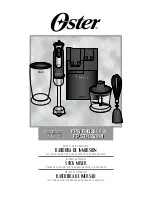Page 15
Glossary
auxiliary send
an output from the console comprising a mix of signals from
channels and groups derived independently of the main
stereo/ group mixes. Typically the feeds to the mix are
implemented on rotary level controls. Ideal for foldback or effects.
balance
the relative levels of the left and right channels of a
stereo signal.
balanced
a method of audio connection which balances the signal between
two wires and a screen which carries on signal. Any interference is
picked up equally by the two wires, but out of phase, resulting in can-
cellation of the interference signal.
bus
a mix of a number of audio signals, feeding to a common output.
clipping
the onset of severe distortion in the signal path, usually
caused by the peak signal voltage being limited by the
circuits power supply voltage.
DAT
Digital Audio Tape, a cassette-based digital recording format.
dB (decibel)
a ratio of two voltages or signal levels. Adding the suffix u denotes
the ratio is relative to 0.775V RMS. Adding the suffix V denotes the
ratio is relative to 1V RMS.
DI(direct injection)
the practice of connecting an electric musical instrument
directly to the input of the mixing console, rather than to an amplifier
and loudspeaker which is covered by a microphone feeding the con-
sole.
equaliser (EQ)
a device that allows the boosting or cutting of selected
bands of frequencies in the signal path.
effects
the use of devices to alter or process the sound to add special effects,
e.g. reverb, normally as a mix of the original (dry) sound and the
treated version.
fader
a linear control providing level adjustment
feedback
the `howling sound caused by bringing a microphone
too close to a loudspeaker driven from its amplified signal.
foldback
a feed sent back to the artistes via loudspeakers or
headphones to enable them to monitor the sounds they are producing.
frequency response
the variation in gain of a device with frequency.
gain
the variation in level of the signal
headroom
the available signal range above the nominal level
before clipping occurs.
highpass filter
a filter that rejects low frequencies.
insert
a break point in the signal path to allow the connection of external
devices, for instance signal processors or to another mixer.
instrument input
an input for keyboards, drum machines and other electronic instru-
ments. Also suitable for guitars with a high output level, not requiring
connection through a DI box.
limiter
a device which clamps the level of the audio signal below a preset
limit, to avoid the possibility of overloading other parts of the signal
chain.
line level signals
at a nominal level of -10 to +6dBu, usually coming from a low
impedance source.
pan (pot)
abbreviation of panorama: controls levels sent to left
and right outputs.
peak
the high point in signal level
PFL (pre-fade listen)
a function that allows the operator to monitor the pre-fade
signal in a channel independently of the main mix.
phantom power
the +48V power supply, available at the channel mic
inputs, for condenser microphones and active DI boxes.
post-fade
the point in the signal path
after
the monitor or master fader and
therefore affected by fader position.
pre-fade
the point in the signal path
before
the monitor or master fader position
and therefore unaffected by the fader position.
splitter
a device which splits the audio signal to feed two or more inputs, pro-
viding isolation between those inputs.
stereo return
an input specifically designed to receive the output of effects or other
external processing devices
tape return
a line level input provided specifically to receive the playback output
of a tape machine for monitoring.
transient
a momentary rise in the signal level.
unbalanced
a method of audio connection which uses a single wire and the cable
screen as the signal return. This method does not provide the noise
immunity of a
balanced input
(see above).


















